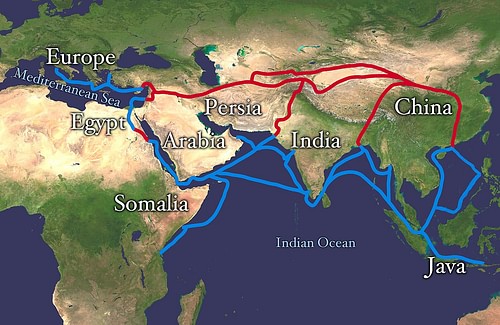You know what I’ve been geeking out over lately? No, it’s not the latest algorithm for optimizing delivery routes or a new AI-powered inventory system. It’s something way older and cooler: The Silk Road. After I saw the BBC documentary called, you guessed it, “The Silk Road”, my life would never be the same.

First off, let’s clear something up: The Silk Road, despite its name, isn’t a single road. Nope, it’s not a silk-lined, straight-shot highway from China to Europe. It’s more like a bunch of meandering paths going all over the place, a bit like your headphone cords after they’ve been in your pocket for five minutes. The Silk Road covered some 4,000 miles of formidable terrain, from the Gobi Desert to the Pamir Mountains. And here I thought my morning commute was tough. I can just imagine some poor trader, loaded down with silk, staring at his camel and saying, “You sure there’s not a shortcut?”.

The stuff the Chinese traded was pretty amazing: silk, jade, porcelain, tea, spices. On the other side, Europe sent horses, glassware, textiles, and manufactured goods. What really amazed me though, is that the Silk Road wasn’t just about moving products; it was the internet before the internet! Ideas, cultures, and technologies were traded along with those goods. It was a true information superhighway, only instead of Wi-Fi signals, they had camels.
The Silk Road wasn’t just a trade network, it was the beating heart of globalization, pulsating with life and exchange before the term even existed. Talk about being ahead of your time! Now, it’s on UNESCO’s World Heritage List, and I bet those traders never saw that coming. They were probably too busy negotiating camel prices or sand-proofing their silk bundles.
The Silk Road is an absolute legend of logistics. It makes my modern-day logistics look a bit less shiny, but it sure gives me a ton of inspiration. If they could sort out trade routes across continents with nothing more than camels and a sense of direction, I reckon I can manage my spreadsheets.
In conclusion, watching the BBC documentary I told you is mandatory! 😊











